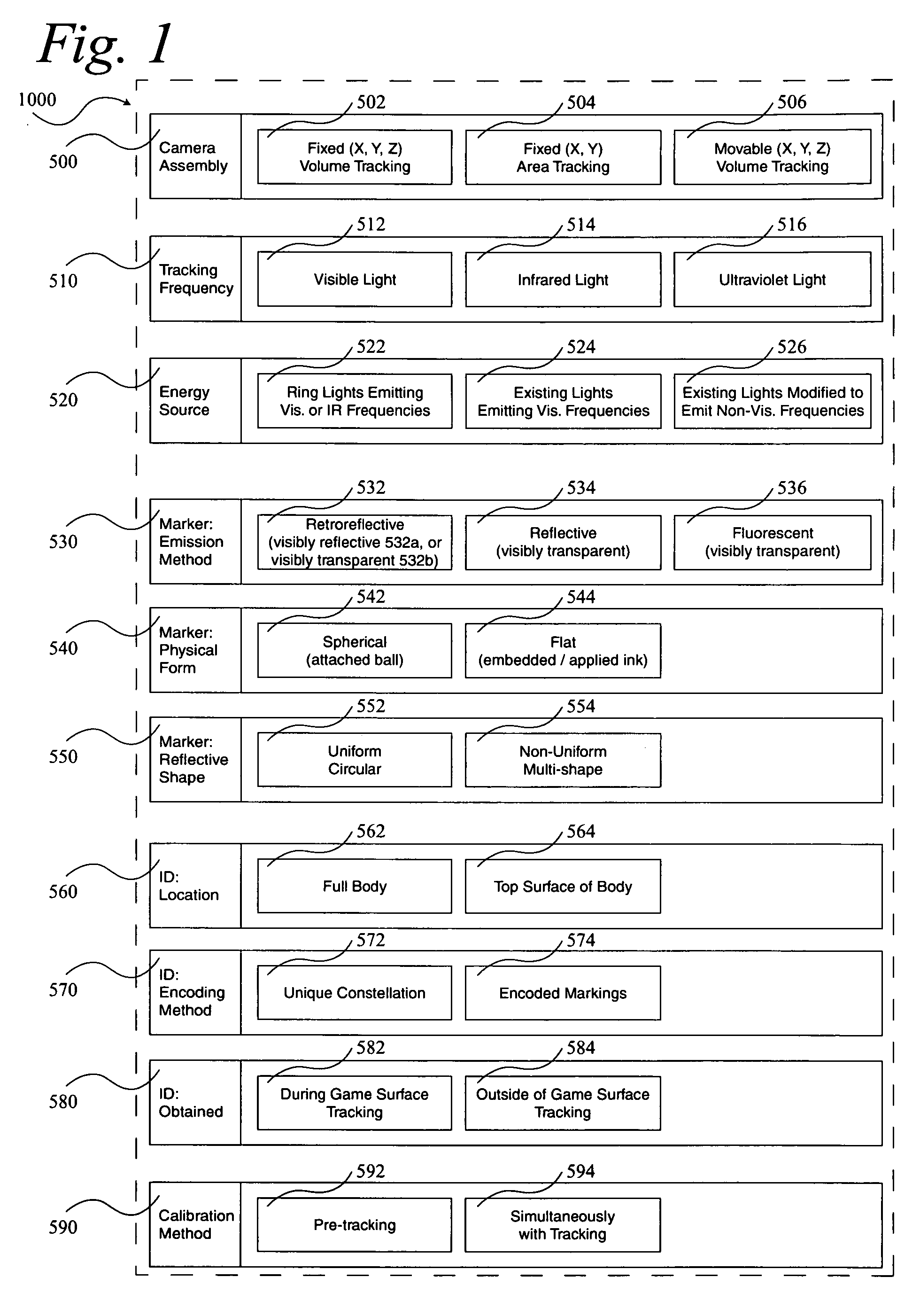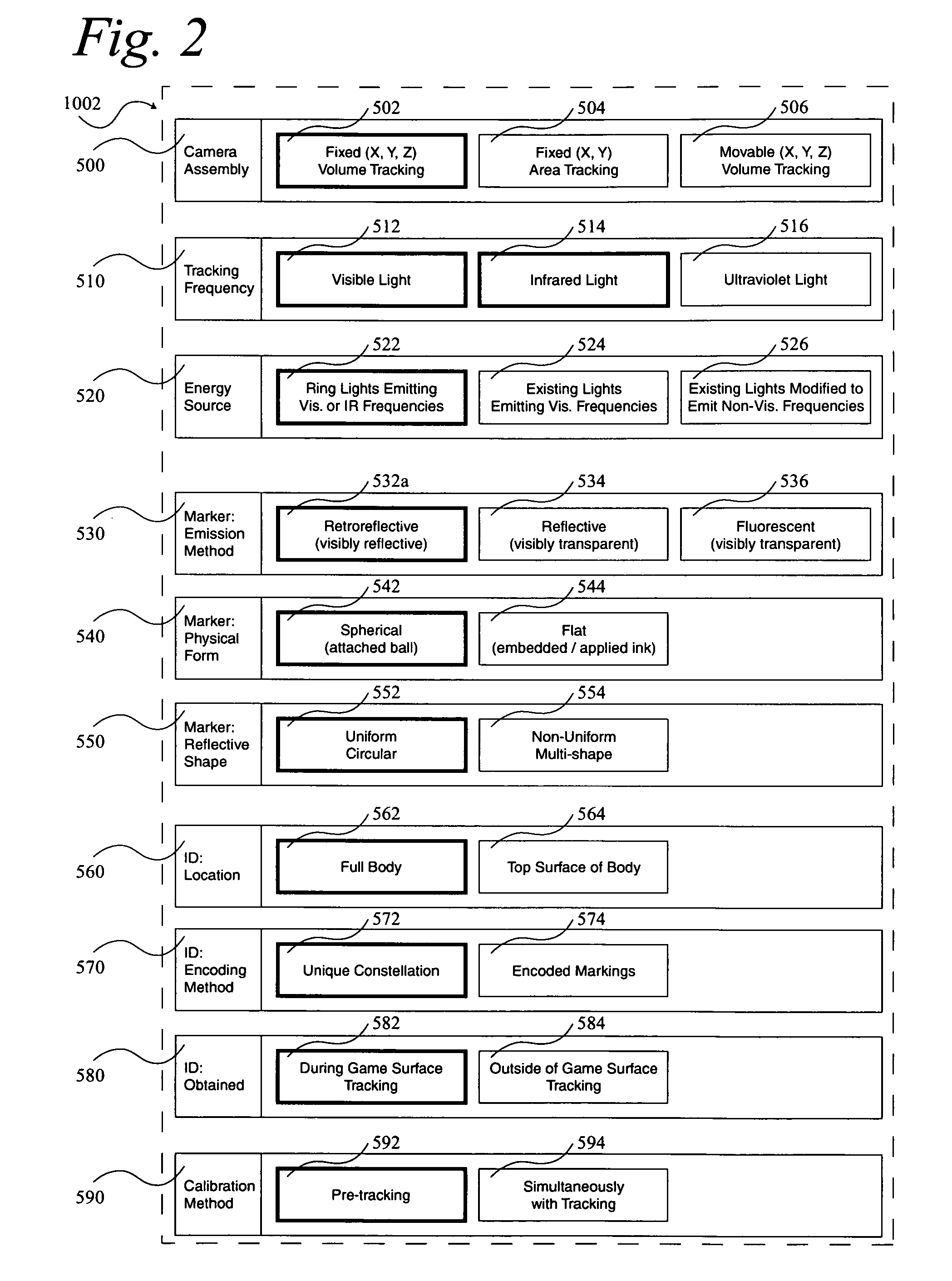Optimizations for live event, real-time, 3D object tracking
a technology of live event and object tracking, applied in the field of machine vision systems, can solve the problems of inadequacies of live environment, limited number of places that can be placed on objects, and system experiences a non-uniform resolution per object, etc., and achieves the effect of simple maintenance and operation, and maximum manufacturing and installation costs
- Summary
- Abstract
- Description
- Claims
- Application Information
AI Technical Summary
Benefits of technology
Problems solved by technology
Method used
Image
Examples
Embodiment Construction
[0240]Referring first to FIG. 1, there is shown a block diagram depicting all of the major components 1000 anticipated to be necessary for the various multi-object tracking machine vision systems according to the present invention. These components are broken into ten groups including Camera Assembly 500, Tracking Frequency 510, Energy Source 520, Marker: Emission Method 530, Marker: Physical Form 540, Marker: Reflective Shape 550, ID: Location 560, ID: Encoding Method 570, ID: Obtained 580 and Calibration Method 590. Camera Assembly 500 can be one or more of Fixed (X, Y, Z) Volume Tracking assemblies 502, Fixed (X, Y) Area Tracking assemblies 504 and Movable (X, Y, Z) Volume Tracking assemblies 506. Tracking Frequency 510 can be one or more of Visible Light 512, Infrared Light 514 or Ultraviolet Light 516. Energy Source 520 can be one or more of Ring Lights Emitting Visible or IR Frequencies 522, Existing Lights Emitting Visible Frequencies 524 and Existing Lights Modified to Emit ...
PUM
 Login to View More
Login to View More Abstract
Description
Claims
Application Information
 Login to View More
Login to View More - R&D
- Intellectual Property
- Life Sciences
- Materials
- Tech Scout
- Unparalleled Data Quality
- Higher Quality Content
- 60% Fewer Hallucinations
Browse by: Latest US Patents, China's latest patents, Technical Efficacy Thesaurus, Application Domain, Technology Topic, Popular Technical Reports.
© 2025 PatSnap. All rights reserved.Legal|Privacy policy|Modern Slavery Act Transparency Statement|Sitemap|About US| Contact US: help@patsnap.com



